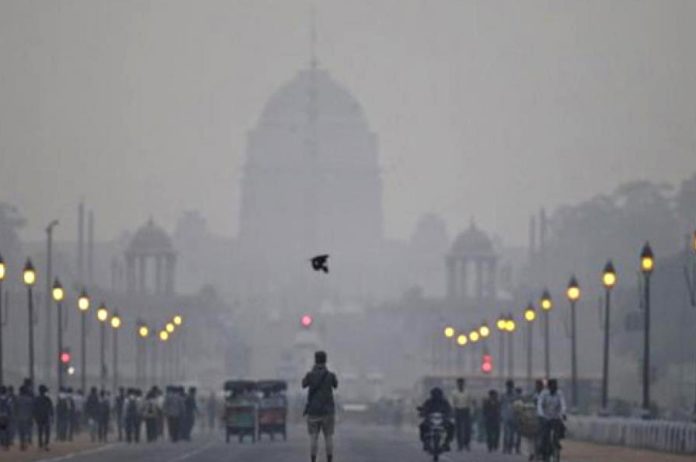The Global air pollution report which was released by the World Health Organization witnessed not even a single shred of any South Indian cities!
According to the reports, 14 out of the top 20 most polluted cities of the world comprised the Indian cities with a pollution measure of a whopping PM 2.5 level including Delhi, Varanasi, Kanpur, Faridabad, Gaya, Patna, Agra, Muzaffarpur, Srinagar, Gurgaon, Jaipur, Patiala, and Jodhpur, but not one Southern city!
When enquired about the reason for the same, a traffic regulation officer in Tamil Nadu revealed that the constant efforts for the improvisation were always been made a primary action which bore a fruitful outcome! He also revealed that a new “activity plan” is being made in order to deal with the rising pollution in a better way.
He also cited that the plans have been made to lodge hi-tech gadgets in the industrial zones in order to facilitate the real-time monitoring of the ambiance around it, thus giving out a much prior indication of the contaminated air!
When asked him about the real-time air pollution measure being PM2.5 in Chennai akin to one found in the other “most polluted” title acclaimed cities bearing the same pollution measure, he defended that the scale is never constant and it keeps switching!
He also added that such a large-scale measure of the pollution is only confined to some solitary zones and has no contribution to it by the entire city!
“Tackling pollution is a continuous process involving multiple government agencies and the people too,” he excalimed!
The Municipal corporations, as well as the transport associations, have been pushed into taking necessary measures in order to woo away the pollution.
There was a revelation that the pollution measure in the city of Tamil Nadu has been in a much better condition in contrast to the one found in the city like Delhi which is hiked up to a whopping level of PM2.5 or worse, PM10. Besides, Chennai noted a hike of PM2.5 measure inclusive of the bearable limit being 27 and 54 and the maximum one is 60, which was akin to the case found in the other metro cities like Coimbatore.
Ignoring the “permissible range measure” of the air pollution, the State control board, witnessed environmentalist Nityanand Jayaraman alleging that “Tamil Nadu is filled with industrial toxic hotspots.” The regions under this “toxicity” include Tuticorin, Mettur, Manali, Ennore, and Cuddalore, for their industries like copper, fertilizer, plastic, and chemicals besides thermal power plants, he said.
He has strictly commanded the TN pollution control board to take the necessary precautions to fiddle with this grave problem on a serious note.
In Karnataka, the Pollution Control Board chairman Lakshman pointed out that advanced infrastructure, hovering alertness balance and thrusting on public transport system has contributed to a major reason for curbing the air-pollution in the city like Bengaluru! The immensely high humid Southern Indian environment too has contributed for not holding a place in that “hazardous” list!
The initiatives like Bus Day, Less Traffic Day, construction of flyovers, pothole filling, road expanding, drifting of bus stops to the outskirts have also contributed to a pollution control, as cited by Mr. Lakshman.
Environmentalist Leo Saldanha alleged, “environmental regulation has been so badly affected in the last two-three years.. nobody is even bothered to check water, air or other forms of pollution”.
Also, the State Pollution Control Board Chairman of Andhra Pradesh, BSS Prasad claimed that the consistent carbon emissions auditing, regulation of the gritty matter substance, hovering coarse matter, switching to the green sheathing and a drift towards using the clean energy sources have been one of the major contributors to the pollution regulation.
He also blissfully revealed that Vishakhapatnam which was tagged as one of the polluted zones of AP six years ago has now been free of this tainted tag!
“Pollution control has now become a focus for us… Our efforts are yielding results and pollution is not increasing as in the case of other cities,” he added.
Adding, he also claimed that it has been the pollution control board who have taken stringent measures against pollution. “A lot more needs to be done but steps are taken in this regard,” he said. Some actions include shelling out of over Rs. 1,700 crores in the Vizag Port Trust and major industrial units like HPCL, in order to make then pollution devoid, has been in the process of implementation.
In Hyderabad, a Pollution Control Board official also cited that air pollution has always been one of the major concerns in the city and is been tackled accordingly.
He also said that measures like keeping a check on the fuel debauchment to avoid the harmful emissions from the vehicles, road expansion and road signal harmony has been made a prior checklist in order to provide a free-flowing traffic in the city, thus, curbing pollution.
In addition, Kerala Pollution Control Board chairman, K Sajeevan, confidently cited that although Kochi and Kozhikode have been under the polluted zones yet have been known to scale lower than the permissible pollution measure of PM2.5 or PM10 akin to the one found in the Northern cities.






















